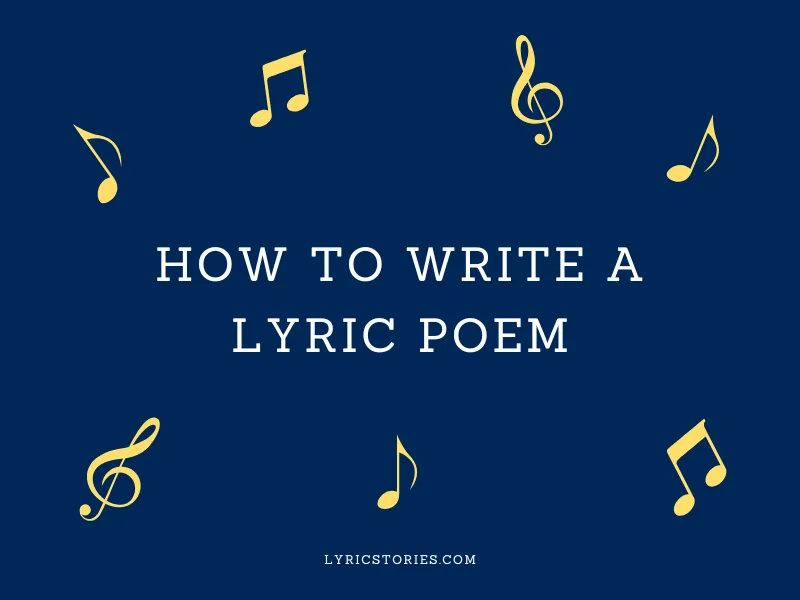Learning how to write a lyric poem will give you a skill you can use for the rest of your life. Lyric poems are celebrated for their emotional depth and musical quality, making them a timeless form of poetic expression. Writing one allows you to articulate feelings, moments, or themes in a way that connects with readers.
But how do you go about crafting a lyric poem? Whether you’re a beginner or an experienced poet, understanding the elements of a lyric poem can help refine your skills.
In this article, we’ll look at what a lyric poem is, provide a step-by-step guide to writing one, and offer examples to inspire your journey. By the end, you’ll have the tools to create a moving and engaging lyric poem that showcases your unique voice.
What Is a Lyric Poem?
A lyric poem is a short, musical form of poetry that focuses on the personal emotions and thoughts of the speaker rather than telling a narrative story. It often goes into themes like love, nature, and the passage of time.
Characteristics of Lyric Poems
- Personal Emotion: The core of a lyric poem is its focus on the poet’s feelings.
- Musicality: Lyric poems often have a rhythmic flow and may incorporate rhyme or meter.
- Imagery: Evocative descriptions help convey the poet’s emotions.
- Universal Themes: Love, beauty, grief, and nature are common topics.
Famous examples of lyric poetry include William Wordsworth’s “I Wandered Lonely as a Cloud” and Emily Dickinson’s “Because I Could Not Stop for Death.”
How to Write a Lyric Poem: Step by Step
Step 1: Understand the Theme and Mood
The first step in writing a lyric poem is identifying the theme and mood. Think about what you want to express and how you want the reader to feel.
- Choose a Theme: Common themes include love, loss, beauty, or self-reflection.
- Set the Mood: Decide whether your poem will be joyous, melancholic, contemplative, or passionate.
Example
If your theme is love, you might decide on a nostalgic mood to capture the bittersweet memories of a past relationship.
Step 2: Focus on Imagery and Emotion
Lyric poems rely heavily on sensory details. Use language that appeals to the senses.
- Show, Don’t Tell: Instead of stating, “I am sad,” describe the feeling with imagery, like “Tears trace silver rivers down the canvas of my face.”
- Use Metaphors and Similes: Compare emotions or situations to relatable images to create depth.
Exercise
Write a list of sensory words that relate to your theme. For a poem about nature, you might jot down words like “breeze,” “sunlight,” “rustle,” and “petals.”
Step 3: Play with Structure and Form
Decide on the structure of your poem. While lyric poems don’t follow a strict form, they often benefit from rhythm and rhyme.
- Meter: Consider using a consistent rhythm, such as iambic pentameter, for a melodic effect.
- Stanzas: Break your poem into manageable sections, often 2-4 lines each.
- Rhyme Scheme: Experiment with rhyming patterns, like ABAB or AABB.
Tip: Read your poem aloud to check for musicality. Adjust words or phrases to enhance the flow.
Step 4: Write the Opening Lines
The beginning of your poem should immediately engage the reader. Start with a striking image, a thought-provoking question, or a powerful statement.
Example
For a lyric poem about love, an opening line might be:
Under the amber glow of fading dusk, our whispers lingered in the twilight air.
Step 5: Develop the Poem’s Emotional Arc
Like a song, a lyric poem often builds toward an emotional climax. Use each stanza to deepen the reader’s connection to the poem’s theme.
- Start Small: Begin with a simple observation or feeling.
- Build Complexity: Add layers of emotion or imagery as the poem progresses.
- Conclude Strongly: End with a line or stanza that leaves a lasting impression.
Step 6: Revise and Refine
Great poetry often comes through revision. Read your poem aloud, share it with others, and tweak it until every word feels intentional.
- Cut Excess Words: Remove anything that doesn’t add to the emotion or imagery.
- Enhance Sound: Adjust for alliteration, assonance, and consonance.
- Seek Feedback: Share your draft with friends or use platforms like Poets & Writers for inspiration.
How to Write a Lyric Poem About Love
Writing about love in a lyric poem is a timeless endeavor. To capture the universal yet personal nature of love, focus on:
- Specific Moments: Think about a shared memory or small gesture.
- Contrasting Emotions: Love often includes joy, pain, and longing.
- Sensory Language: Engage readers by describing the sights, sounds, and sensations of love.
Example
The scent of jasmine lingered, a ghost of you in the midnight air.
Frequently Asked Questions
How Do I Write a Good Lyric Poem?
To write a compelling lyric poem, focus on genuine emotion and musicality. Here are some key tips:
- Write from the Heart: Authentic emotions resonate most with readers. Tap into your personal experiences.
- Focus on a Specific Moment: Use detailed images to capture a scene or feeling.
- Play with Sound Devices: Techniques like alliteration and rhythm enhance the poem’s musicality.
- Appeal to the Senses: Describe sights, sounds, or textures to immerse the reader.
- Revise for Impact: Trim unnecessary words and ensure each line contributes to the poem’s mood and flow.
Example
Instead of saying, “I miss you deeply,” write:
Your absence hums like a hollow tune,
a song the wind forgot too soon.
With these steps, you can craft a lyric poem that captivates and lingers in readers’ minds.
Can You Give an Example of a Lyric Poem?
Here’s a short example:
Beneath the willow’s weeping arms,
A melody hums, soft and calm.
The earth, a cradle, rocks the night,
While stars above spill silver light.
Where Can I Find More Resources?
For more tips, check out The Poetry Foundation or Writer’s Digest for guides and inspiration.
If you’re specifically learning how to write lyric poems for music, check out some of our other Lyric Writing Tips, including our page on How to Write Song Titles and How to Write Song Lyrics Without Music.
Final Thoughts
Writing a lyric poem is an art form that allows you to express deep emotions through rhythm and imagery. By understanding its themes, experimenting with structure, and revising your work, you can create a poem that resonates both personally and universally.
Whether you’re writing about love, nature, or loss, remember to stay authentic to your voice and let your emotions guide your words.

